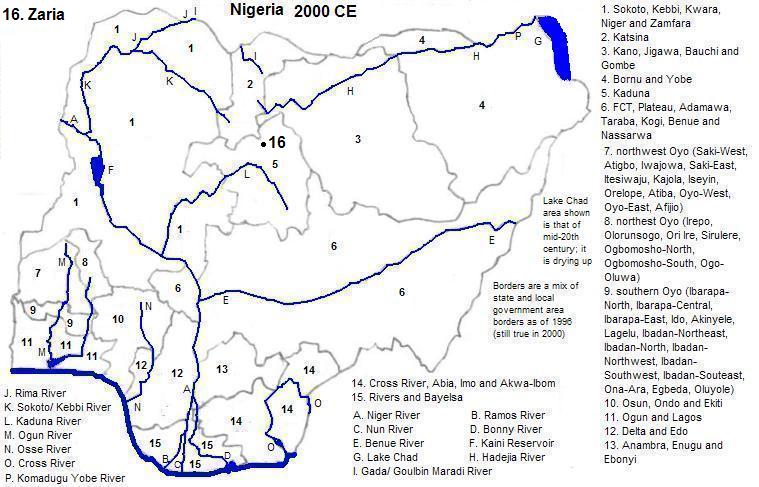Zaria
Zaria, formerly called Zazzau, located in today's Kaduna State, had an estimated population of 60 thousand in 1600, tied for the largest city in what is now Nigeria.1 It replaced Turunku as the capital of the eponymous state.2 The majority speak Hausa and are Moslems.
Before the 20th century, the city name was rendered in Ajami script, perhaps like this3: ززز
External references
Emirs Palace in Zaria
Historical Maps



Footnotes
(1) In Chandler's table, Cities of Africa, 1600, in the section, South Moslems, Zaria and Katsina, is listed between Kazargamu, estimated to have the same number of residents, and Kano, said to have 40 thousand. Oyo is the largest city in the section, Guinea, and also has an estimated 60 thousand residents. (Tertius Chandler, Four Thousand Years of Urban Growth, 2nd ed., 1987, The Edwin Mellen Press)
(2) Ibid., page 290 (section on Turunku).
(3) Possible errors. Transliteration is from Zazzau, rather than from Zaria, but this is speculative. Vowels are omitted here. Normally Arabic syllables that are consonant-vowel end in a long vowel, and long vowels are represented orthographically, but it isn't clear how the Roman form 'AU' would be represented, if at all. In any case it is not clear how the Ajami script (adaption of Arabic script to non-Arabic) would handle the vowels. Further the choice of zay (zain) rather than zah is speculative and it is not clear that the medial double 'z' (Roman script) would be doubled up in the Ajami.